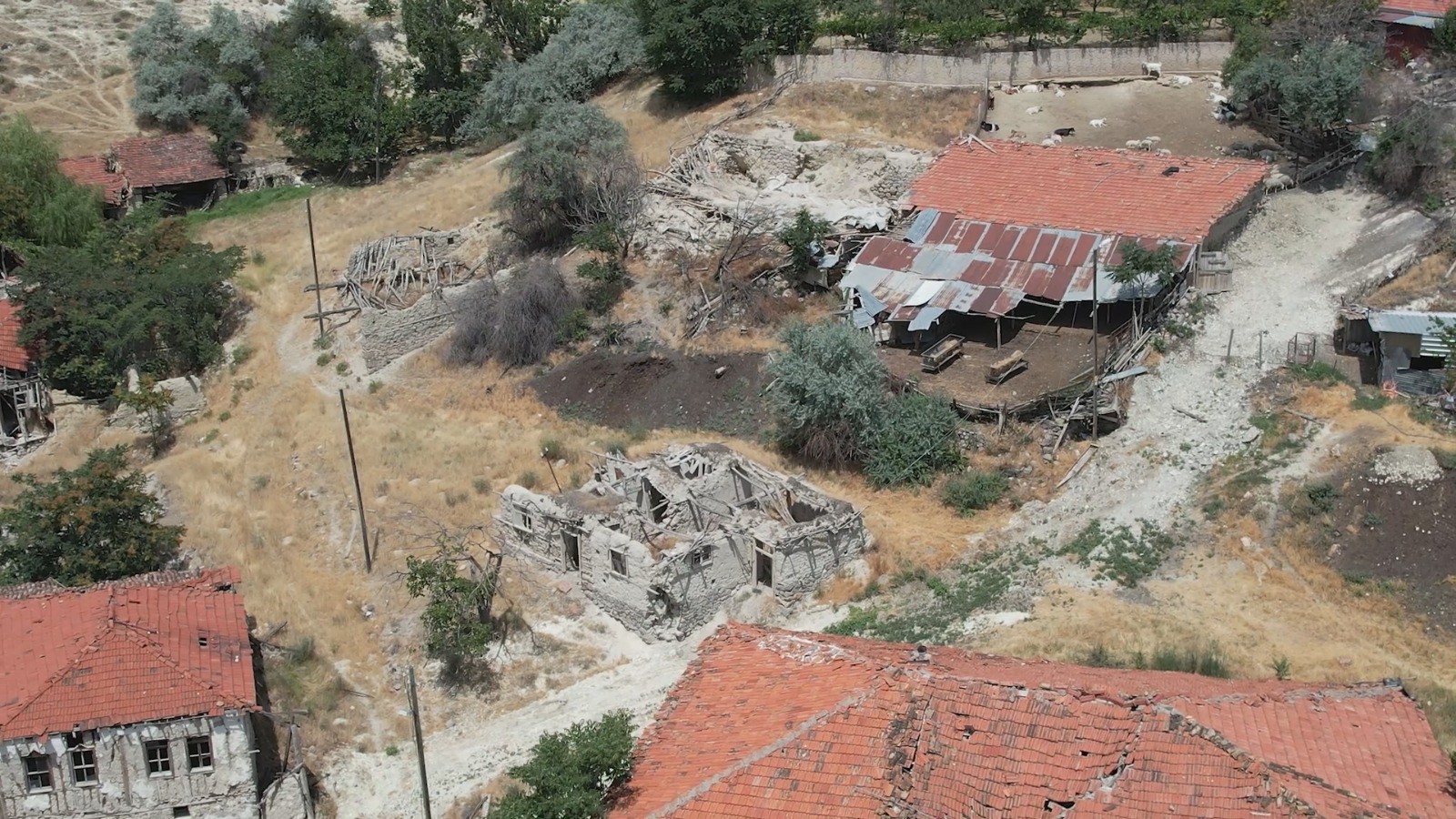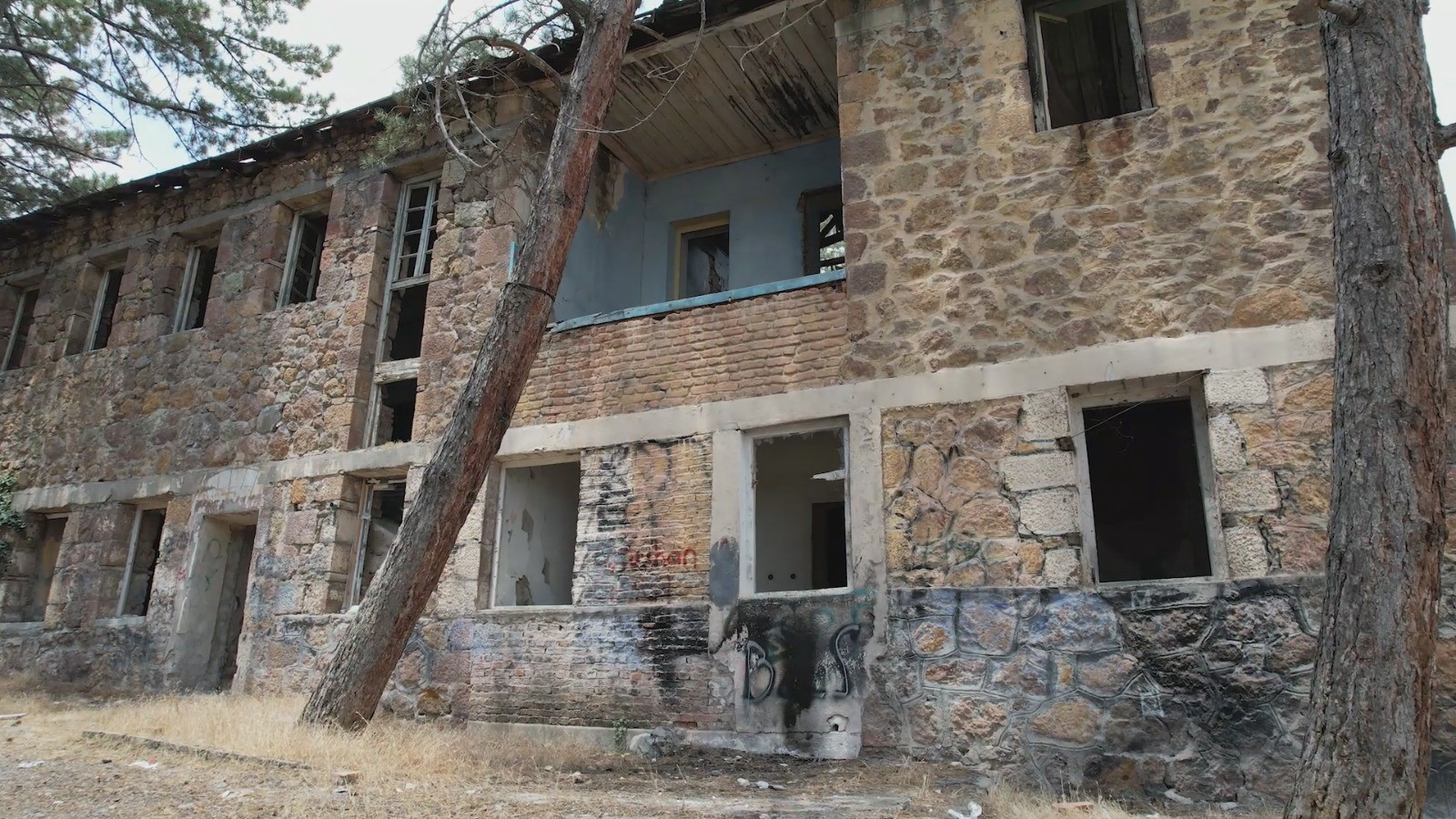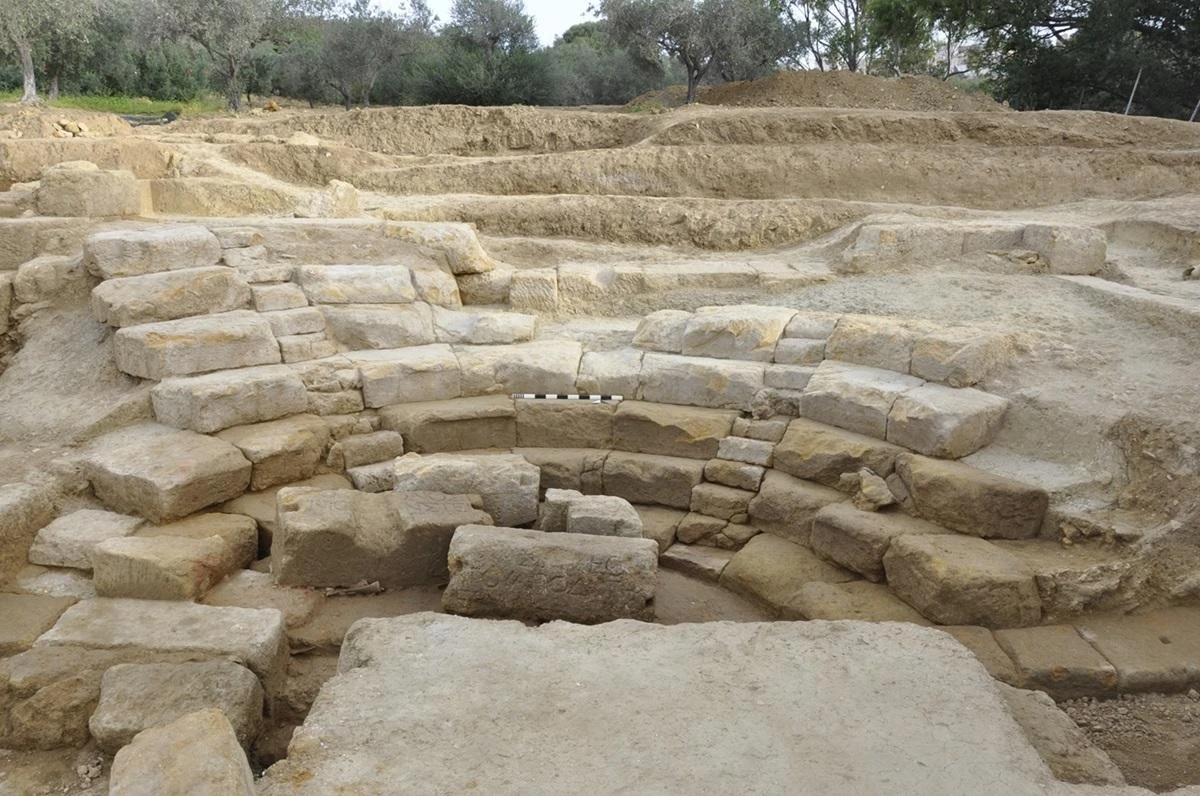Haunted village? Unveiling truth behind Kayi’s ‘Village of Jinns’ myth in Türkiye
 Abandoned Kayı village, Ankara, Türkiye, July 10, 2024 (Photo: IHA Photo)
Abandoned Kayı village, Ankara, Türkiye, July 10, 2024 (Photo: IHA Photo)
Just 35 kilometers outside of Ankara, the abandoned village of Kayi stands as a silent testament to the passage of time. Due to the dangers of landslides and the limited space of the village, residents have long since left the area, leaving behind a ghostly landscape that captures the curiosity of visitors.
Located in Ankara’s Sincan district, Kayi Village, named after the Kayi tribe—one of the 24 tribes of the Oghuz Turks—has been deserted over the years.

The walls of the houses in the village are marked with graffiti labeling it as “the village of jinns,” while the orphanage and various structures remain in their natural state. The ruins of old Kayi Village still house the Hasan Dede Tomb, which continues to attract visitors.
Retired teacher Hidayet Ulusan dispels the myths about the presence of jinns in the village, explaining, “This village was once a small settlement of five households left behind by Ertugrul Gazi on his way to Sogut. Sewage waters flowing into a nearby stream caused a bad odor in the village. Coupled with the risk of landslides, the village was relocated. The area was too narrow and limited for building new homes for the younger generation.”

“A tale to scare children”
Ahmet Demirtas, a local, clarifies that the reason for the relocation was the limited space in the village.
“There are no jinns here. It’s a tale made up to scare children. The only notable site is the Hasan Dede Tomb. As the village couldn’t expand, people moved away. When the orphanage, where most villagers worked, relocated, the villagers moved to the center. Unknown people started visiting Kayi Village, and drug users began frequenting the area. They wrote ‘there are jinns’ on the walls of the houses. These are baseless claims; there are no jinns in our village. Our village originate from the Kayi tribe,” he said.
The abandoned village of Kayi near Ankara stands as a poignant reminder of its historical roots, debunking myths of jinns with its compelling tale of natural challenges and human migration.



